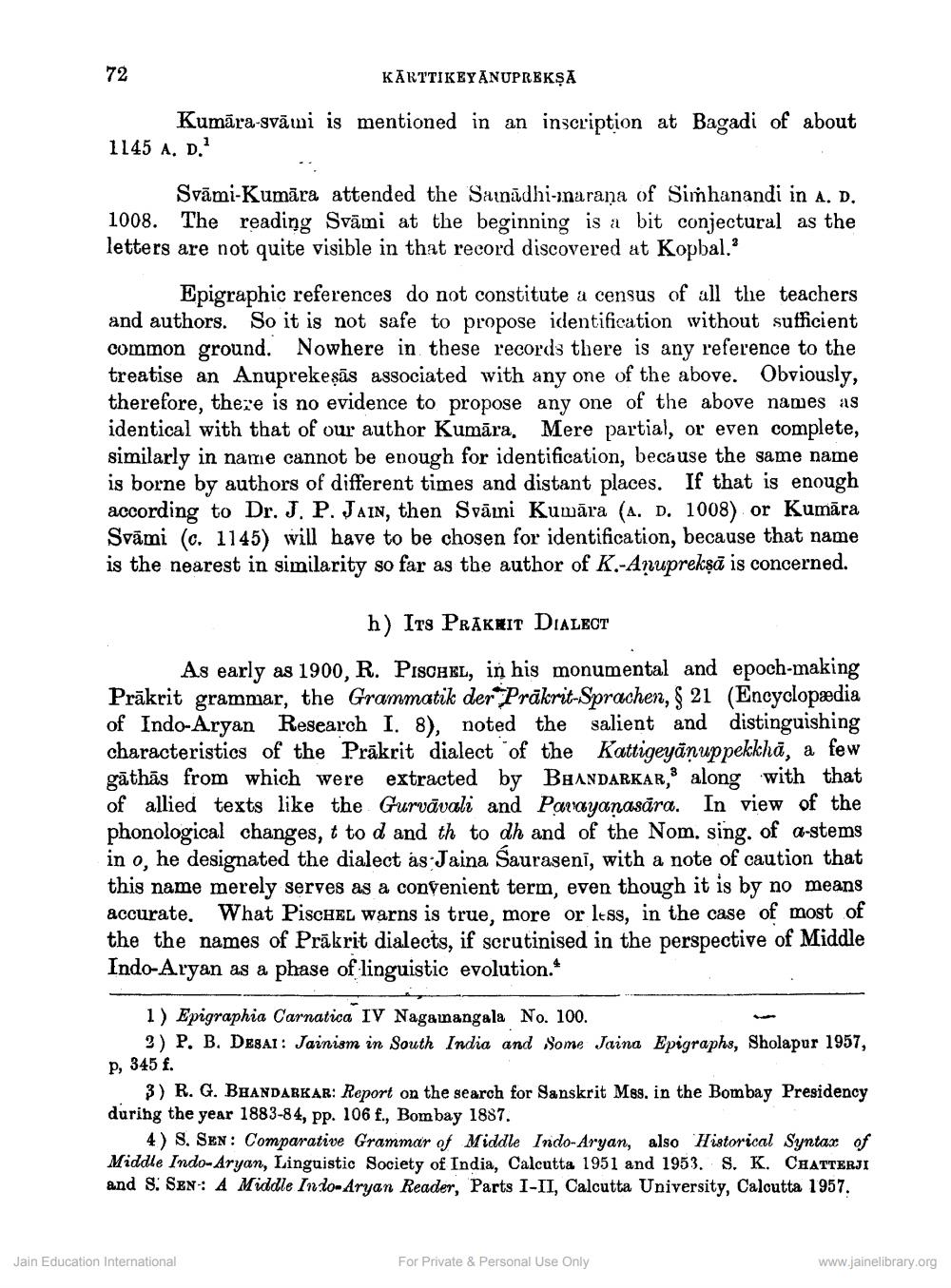________________
72
KĀRTTIKEYANUPREKŞA
Kumāra-svāmi is mentioned in an inscription at Bagadi of about 1145 A, D.
Svāmi-Kumāra attended the Sainādhi-narana of Simhanandi in A. D. 1008. The reading Svāmi at the beginning is a bit conjectural as the letters are not quite visible in that record discovered at Kopbal.”
Epigraphic references do not constitute a census of all the teachers and authors. So it is not safe to propose identification without sufficient common ground. Nowhere in these records there is any reference to the treatise an Anuprekesās associated with any one of the above. Obviously, therefore, theze is no evidence to propose any one of the above names as identical with that of our author Kumāra, Mere partial, or even complete, similarly in name cannot be enough for identification, because the same name is borne by authors of different times and distant places. If that is enough according to Dr. J. P. JAIN, then Svārni Kumāra (A. D. 1008) or Kumāra Svāmi (c. 1145) will have to be chosen for identification, because that name is the nearest in similarity so far as the author of K.-Anuprekķā is concerned.
h) Irs PRĀKKIT DIALECT
As early as 1900, R. PISCHEL, in his monumental and epoch-making Prākrit grammar, the Grammatik der Prākrit-Sprachen, § 21 (Encyclopædia of Indo-Aryan Research I. 8), noted the salient and distinguishing characteristics of the Prākrit dialect of the Kattigeyānuppekkhā, a few gāthās from which were extracted by BHANDARKAR, along with that of allied texts like the Gurvāvali and Parayanasāra. In view of the phonological changes, t to d and th to dh and of the Nom. sing. of a-stems in o, he designated the dialect as Jaina Saurasenī, with a note of caution that this name merely serves as a convenient term, even though it is by no means accurate. What Pischel warns is true, more or less, in the case of most of the the names of Präkrit dialects, if scrutinised in the perspective of Middle Indo-Aryan as a phase of linguistic evolution.
1) Epigraphia Carnatica IV Nagamangala No. 100.
3) P. B. Desai: Jainism in South India and Some Jaina Epigraphs, Sholapur 1957, p, 345 f.
3) R. G. BHANDARKAR: Report on the search for Sanskrit M88. in the Bombay Presidency during the year 1883-84, pp. 106 f., Bombay 1887.
4) 8. SEN: Comparative Grammar of Middle Indo-Aryan, also Historical Syntax of Middle Indo-Aryan, Linguistic Society of India, Calcutta 1951 and 1953. S. K. CHATTERJI and S: SEN: A Middle Indo-Aryan Reader, Parts I-II, Calcutta University, Calcutta 1957.
Jain Education International
For Private & Personal Use Only
www.jainelibrary.org




